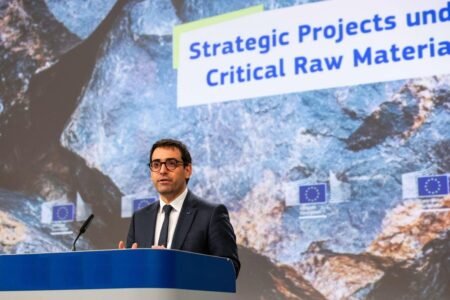The European Red List, a review of the conservation status of some 6,000 European species, is hot off the press and the results are not good. The data, which are compiled with the support of European Commission funding, show that 14% of dragonflies, 11% of beetles and 9% of butterflies are at risk of extinction within Europe. Even more alarming is the fact that some of these species are threatened with extinction at the global level. These species have been added to the International Union for Conservation of Nature (IUCN) Red List of Threatened Species (TM).
Many of the world’s dragonflies make their home in Europe, in particular in the south of France and parts of the Balkan Peninsula; three of the ‘Most Threatened’ dragonflies are found in Greece and the surrounding area. Of the 130 dragonfly species under review, 14% are at risk and 5% are threatened with global extinction. The data point out that another 11% are listed as ‘Near Threatened within Europe’.
So what is responsible for this alarming problem? Experts say the dragonflies’ wetland habitats are drying up due to a combination of higher numbers of hot and dry summers and increased water extraction for drinking and irrigation.
In total, 431 beetle species that are found only in Europe were assessed and the data indicate that 46 species are threatened in Europe, 29 species are threatened with global extinction, and 56 species are listed as ‘Near Threatened within Europe’. New to the IUCN Red List is the saproxylic beetle, which is a pivotal player in the recycling of nutrients. The loss of mature trees and logging activity has been identified as the culprits behind its looming demise.
The review also shows that 31% of the 435 butterfly species that call Europe home are shrinking in number, and 9% are already at risk of extinction. Nearly a third of Europe’s butterflies cannot be found anywhere else on the planet, and 22 of these endemic species are globally threatened.
‘Nature’s future is our future, and if it fails, we will fail too,’ underlined Janez Potocnik, the EU’s Environment Commissioner. ‘So when a Red List like this raises the alarm, the implications for our ecosystems and for our own future are clear. This is a worrying decline.’
The Commission is already developing its position for a new international target to halt the decline in biodiversity. This will be examined at the next Conference of the Parties of the Convention on Biological Diversity which will be held in the Japanese city of Nagoya in October of this year.
For her part, the Director of the IUCN Biodiversity Conservation Group, Jane Smart, said: ‘When talking about threatened species, people tend to think of larger, more charismatic creatures such as pandas or tigers, but we mustn’t forget that the small species on our planet are just as important, and are also in need of conservation action. Butterflies, for instance, play a hugely pivotal role as pollinators in the ecosystems in which they live.’
The European Red List uses the same criteria as the inclusive IUCN Red List of Threatened Species (TM) but is limited to Europe. The reviews include assessments on mammals, amphibians, reptiles, freshwater fish, dragonflies and butterflies, as well as some groups of beetles, molluscs and vascular plants.
Reviewers assign species to one of eight categories of threat and those that fall under ‘Critically Endangered’, ‘Endangered’ or ‘Vulnerable’ are collectively described as ‘Threatened’.
For more information, please visit:
International Union for Conservation of Nature
Source: Community R&D Information Service (CORDIS)






